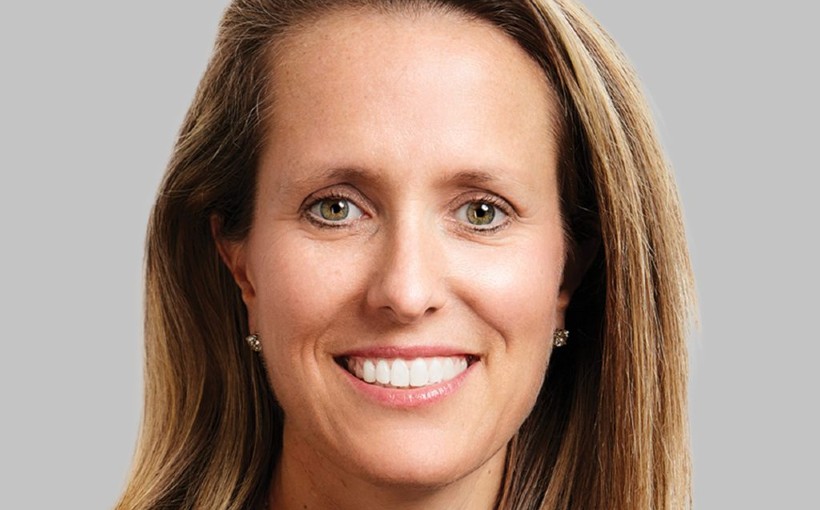Berkadia and Knight Frank are teaming up to present a webinar on September 24th, titled “Navigating Global CRE Equity and Debt Markets.” The webinar will feature Knight Frank’s Global Head of Capital Markets Neil Brookes, who will be joined by Partner Lisa Attenborough to provide an overview of the current global debt market.
Following this presentation, Brookes will be joined by Hilary Provinse (EVP – Production and Capital Markets) from Berkadia, Chinmay Bhatt (Senior Managing Director) from Berkadia JV Equity & Structured Capital, and Alasdair Pritchard (Partner) from Knight Frank for a roundtable discussion on global debt and equity markets. They will also discuss what investors can expect in the year ahead. In anticipation of the webinar, Provinse has shared some insights focused on the US market below:
The multifamily sector is seeing new debt structures and financial products emerge that help investors manage risk while improving returns. One trend is an increase in short-term fixed-rate loans (3-5 years terms) offered by life insurance companies due to strong annuity sales. These loans offer lower interest rates compared to floating-rate loans which make them attractive for investors.
Freddie Mac’s structured products such as Q-deals and ML-deals are also gaining popularity. These allow third-party securitization opportunities which free up space on lenders’ balance sheets while providing more liquidity in both conventional multifamily markets (Q-deals) as well as targeted affordable markets(ML-deals). This approach allows smaller institutions like Community Development Financial Institutions or local banks to participate in mortgage pools more efficiently thus opening doors for sponsors with smaller portfolios.
Agencies like Fannie Mae & Freddie Mac have a significant influence over financing options available in the multifamily sector offering competitive rates across all conditions regardless of market fluctuations.Terms underwriting features have adapted accordingly allowing borrowers flexibility when refinancing or acquiring assets. Recent adaptations include shifting to short-term fixed-rate loans with flexible prepayment options that mimic the benefits of floating-rate loans while avoiding expensive rate caps or 35-year amortization in a rising interest rate environment. Agencies remain committed to workforce housing and regulatory goals for specific affordability targets.
Agencies are also focusing on property condition when assessing new transactions as well as sponsors’ existing assets, emphasizing “appraiser independence” to ensure unbiased valuations. Stricter diligence requirements have been implemented due to increased instances of suspicious activity and fraud, especially for new or less experienced sponsors and transactions involving brokers.However, despite longer quote times due to high inflows & additional diligence required post-application timelines remain under the control of lenders providing them with a competitive edge.
As investment sales market improves agencies are aggressively competing by increasing their pipelines meeting market needs.This competitive drive is evident in their efforts towards adapting products tailored solutions ensuring continued relevance & competitiveness in commercial real estate sector.
Non-traditional lenders such as private equity firms & debt funds play an increasingly significant role in multifamily debt markets especially since traditional banks have scaled back involvement.These lenders often focus on shorter-duration,floating-rate loans offering borrowers flexibility when exiting loan upon executing business plans or improving market fundamentals.Additionally,private equity firms acquire insurance company portfolios allowing them more credit product offerings alongside longer fixed-rates usually associated with these companies’ lending practices.The most active lending sources continue being Agencies ,life companies,&debt funds,banks continue prioritizing existing relationships navigating current markets cautiously.Non-traditional lenders fill this gap offering shorter loan terms,reduced call protection&flexible underwriting standards including minimal occupancy requirements not typically offered by agencies.Borrowers still face challenges from floating rates starting at 8%due SOFR rates currently prevailing
In light of current debt-market conditions,multifamily investors prefer refinancing using short-term fixed-rate loans having flexible prepayment options maintaining refinancing flexibility should interest rates drop or if they decide to sell the asset. However, with yields having recently fallen, there is an increased demand for longer-term debt. The market has seen a slowdown in new unit deliveries projected to decrease from 560,000 in 2024 to 328,000 by 2027 according to Yardi.This is driven by both property market fundamentals and current capital markets environment.Investors seek “time” navigating these conditions anticipating overbuilding now will lead shortage of new units in future.
To register for the webinar click here.
“}]]


